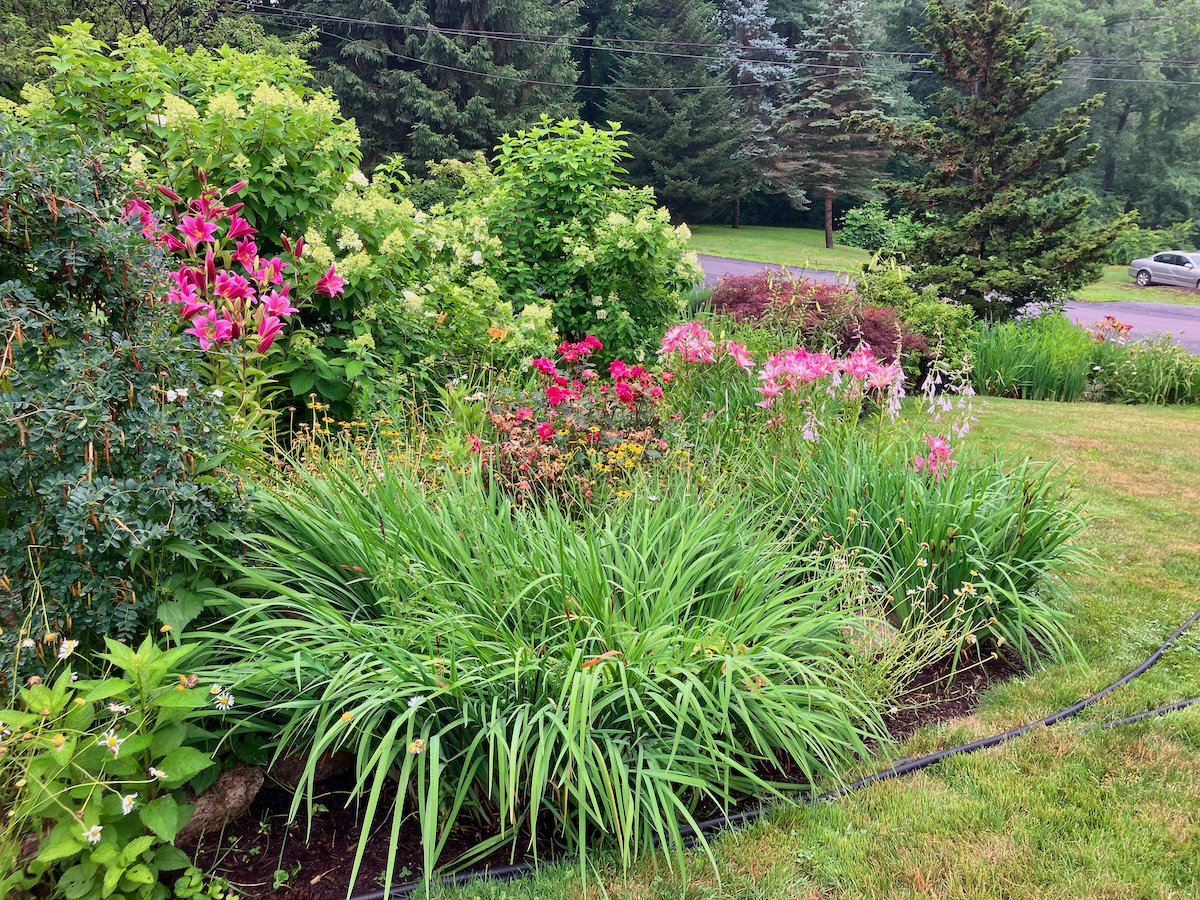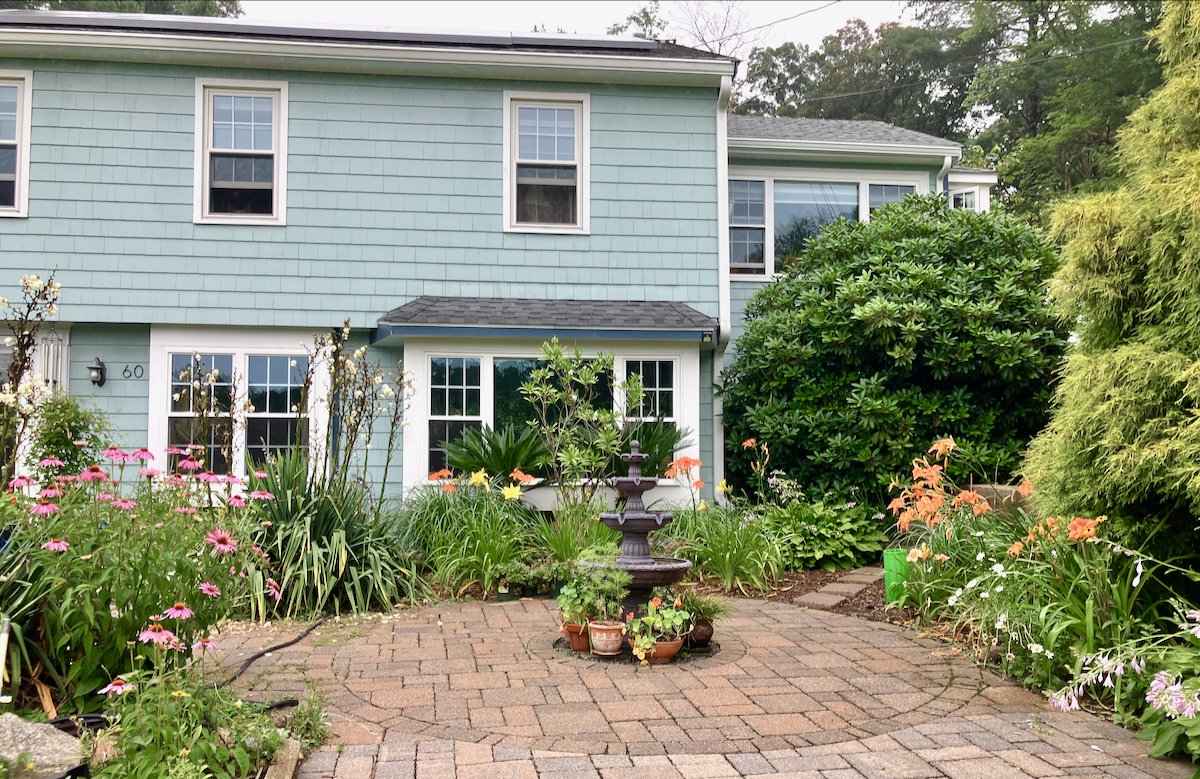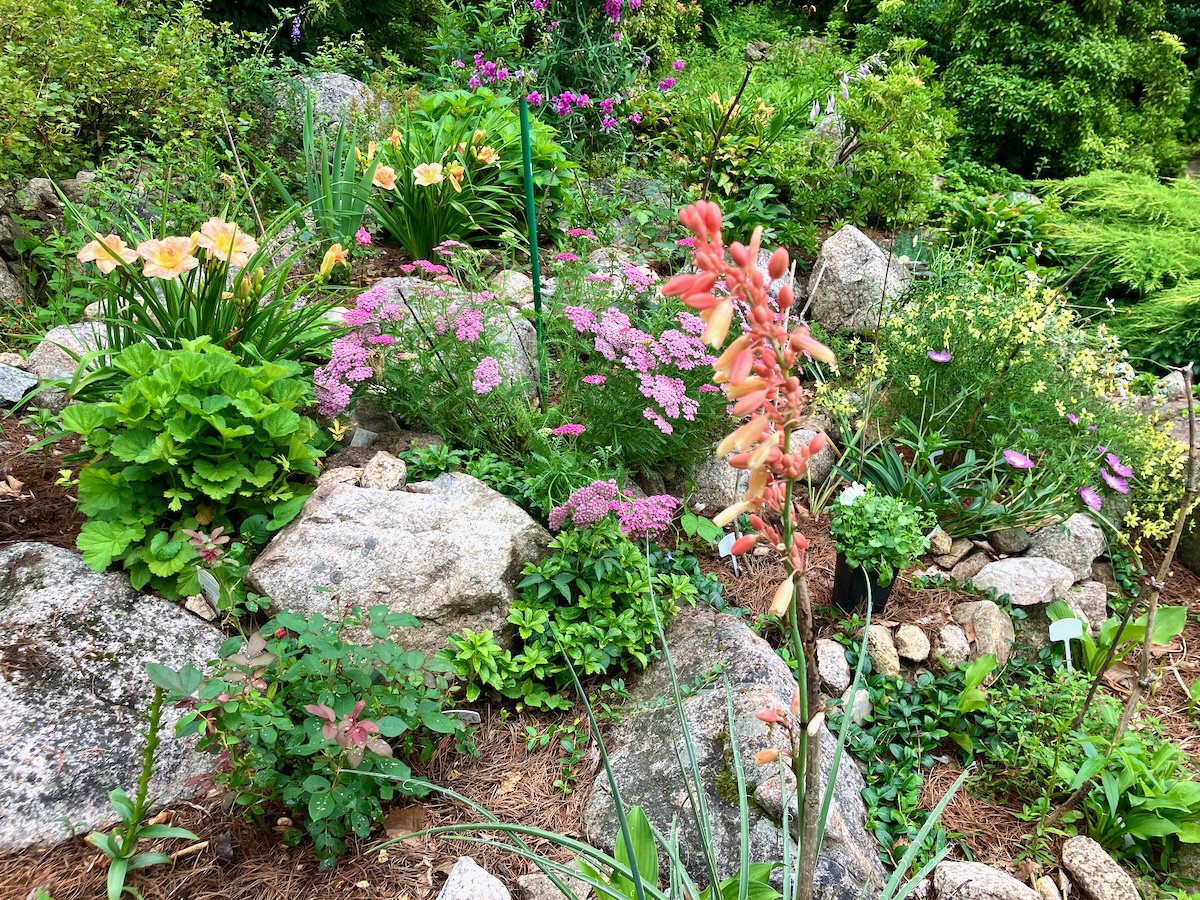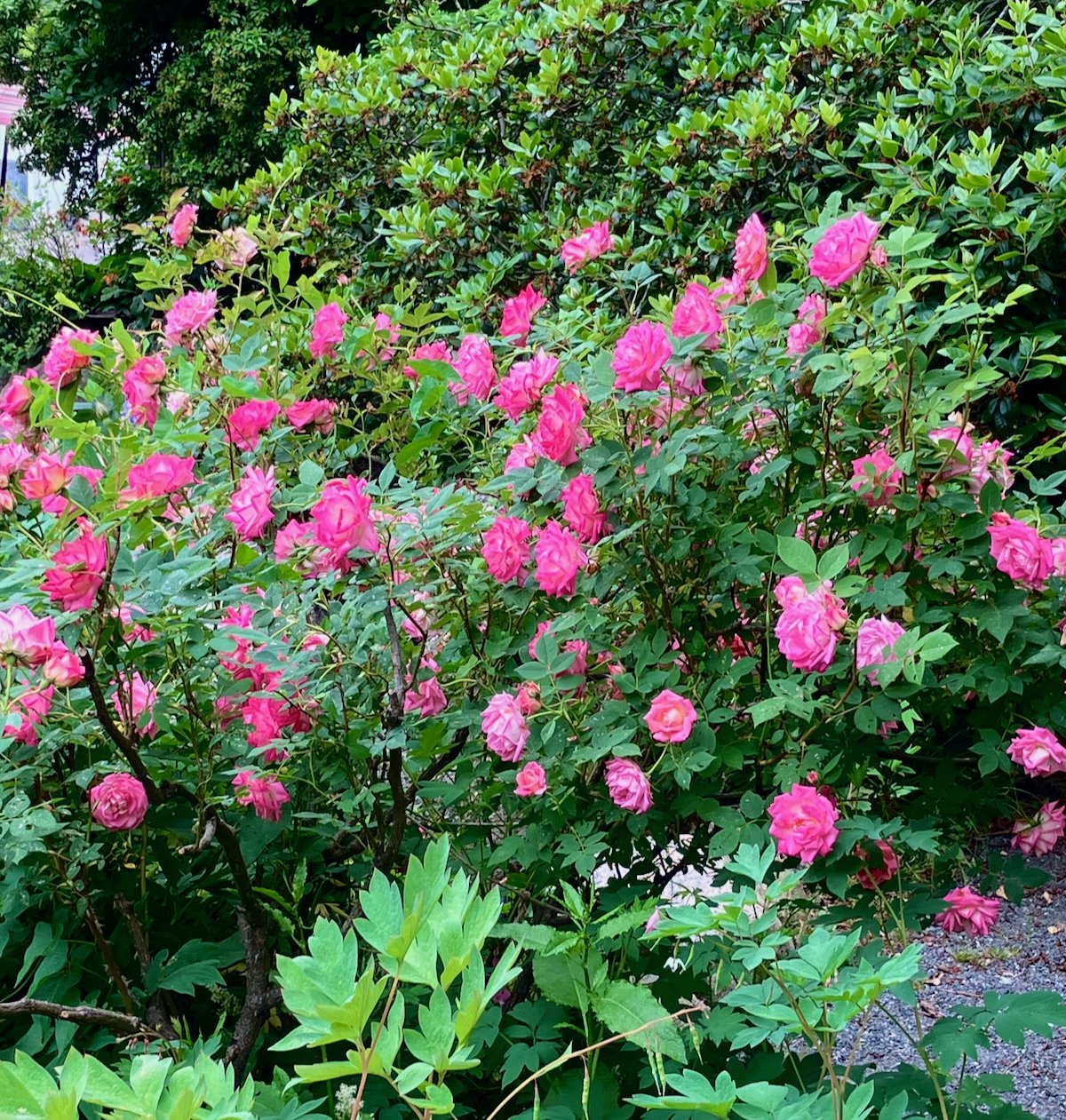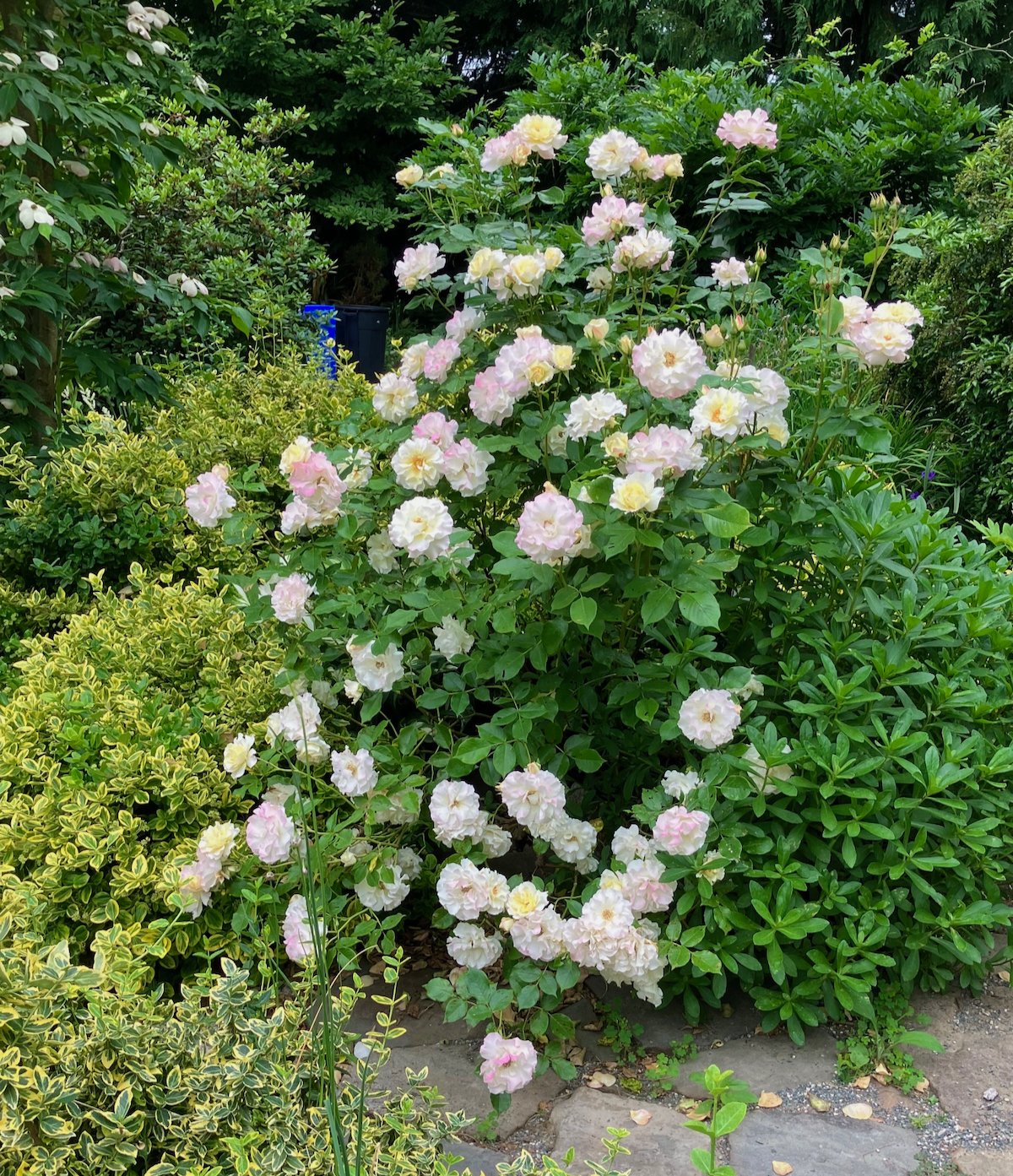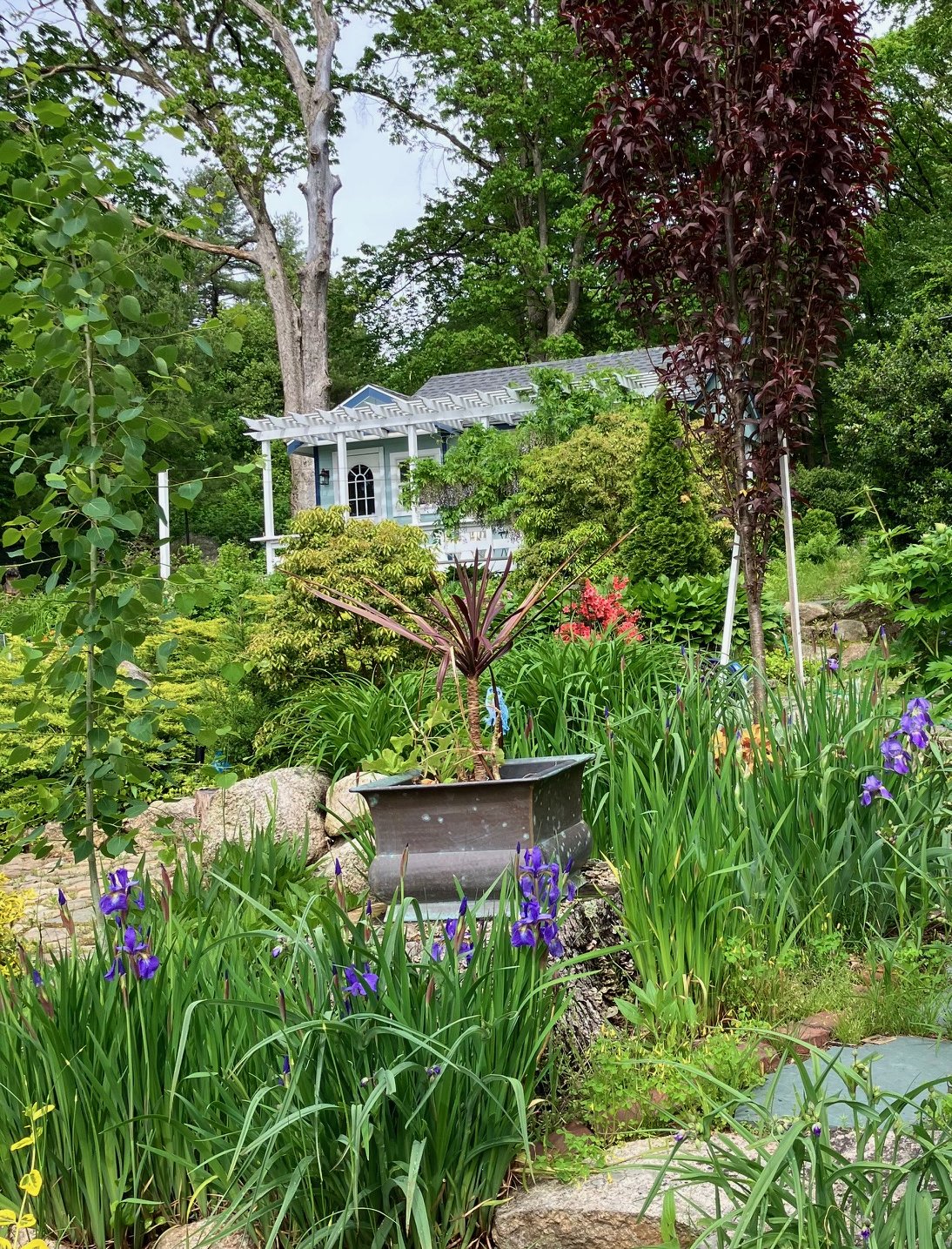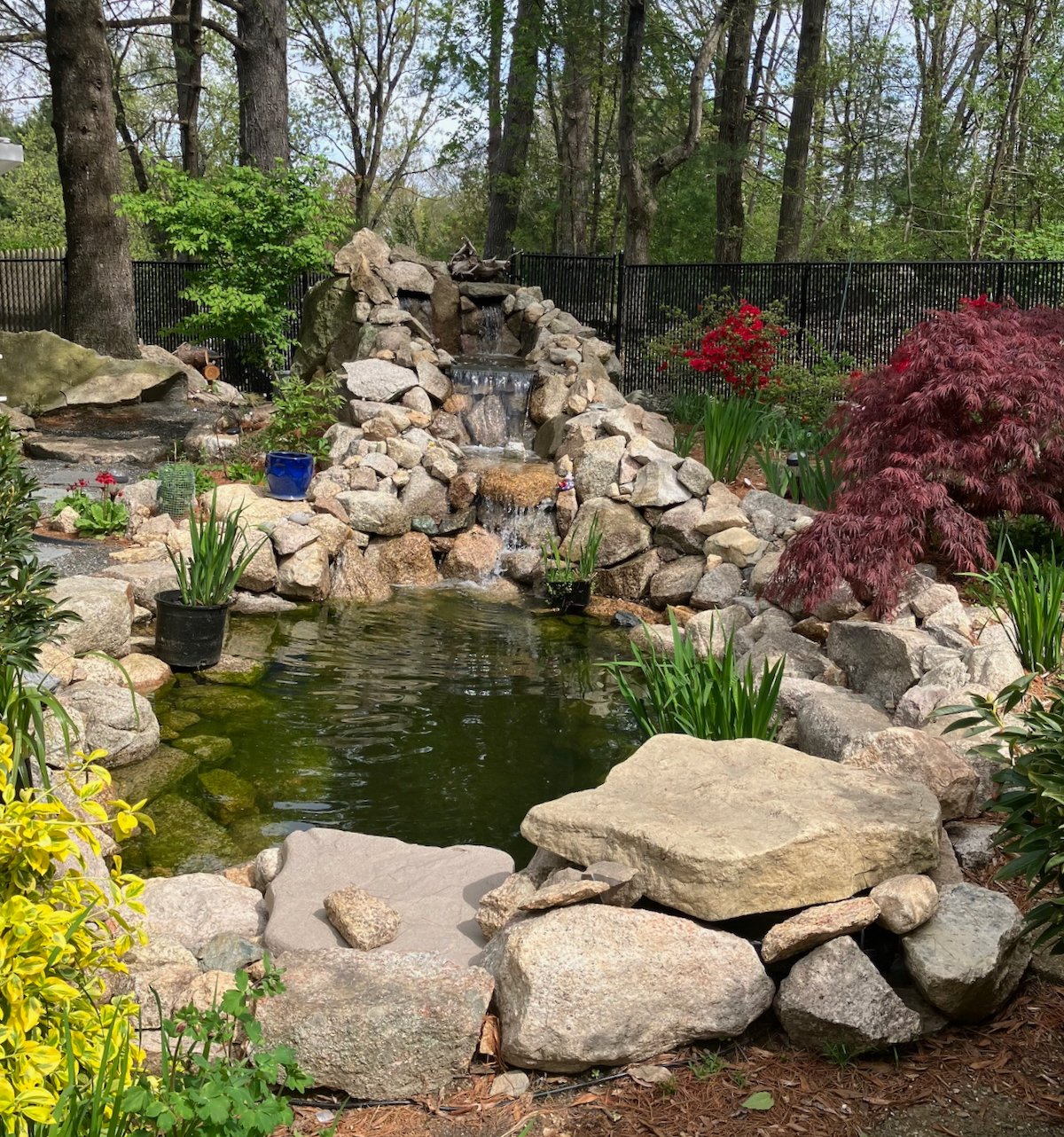The Story of my Garden on the Rocks
/By Elena Lapitsky
My garden didn’t start on paper—most of it started because of necessity. Look straight at the house along the driveway: this border was created after a tall, double oak tree was removed because of its proximity to the house and septic tank. According to Feng Shui, the tree was also blocking the air flow and energy to the front door. The oak, other smaller trees and a gigantic Hicks yew bush were removed few years later. The grass still could not put it roots here no matter how often we tried to improve the soil. Only after that I started a garden border along the driveway. The space in front of the house is a little more formal with spiral symmetrical topiaries. After all, it’s an entrance to the house where formality is expected.
To the left of the house is an “alpine hill” which was my first garden, and originated after I discovered a big and interesting rock formation. On trellises which mark the entrance to “alpine hill” is autumn clematis and to the right is a huge Crocosmia ‘Lucifer’ which puts on a great show. Boxwood, azaleas, rhododendrons, yews, and two pink dogwoods surround the sculptural, impressive rocks. I try to keep this area as natural and bold as possible as it would be in nature. The stepping stone path takes you to a flat area, the only dappled shade area on my property. It took many years to “create” this space. It was hidden by big trees, tangled vines and all imaginable undergrowth. This is the steepest and highest elevation on the property that you see from the street. It took me years to conquer this hill and create a flat area at the bottom, framed by hosta, irises, lilies and sage on all sides. In spring, blue is the dominant color here. In front of you are a wide bottom terrace and four narrow terraces that form a vegetable garden above the big boulder in the middle. The huge boulder was discovered during clearing (you could only see the very top of it when I started), literally step-by-step with a shovel and many, many bloody scratchers all over my body! The best reward for this is a small hosta that planted itself inside a big split on the rock. It can’t be more natural!
Between the lawn and the boulder is a “Parterre garden” with a little frog pond in the corner to your left and a compost pile behind the cement blocks to your right. To the left of the main four terraces there are smaller terraces to accommodate a white Kousa dogwood, perennials, and spring bulbs. On the top of the hill are gooseberries and red currants, grasses, lilies, and irises. The terrace gardens also features pear, apple and apricot trees, grape vines, and potted vegetables.
The border along the street I call a “passer-by garden.” Let’s face it— grass doesn’t do well along the road: too much salt in the winter, too dry and hot in the summer. Rain washes off the soil from every yard on the street into our drainage system. (One at the end of my property is almost full with washed off soil.) After I realized how much soil goes to waste, I made this garden. I would prefer to give people smiles when they stroll/walk/jog along my street and see the beauty of the flowers. There are daffodils, narcissi, snowdrops, grape hyacinths and irises in early spring, followed by Oxeye daisies and roses in shades of red, pink and white. In summer you will see various salvias and day lilies, short and tall (some up to 6 feet), liatris that didn’t do well due to bunnies, hollyhock, Russian sage, pink and lilac bee balm, blue balloon flowers, penstemon, amsonia with its light blue flowers and soft leaves, purple lupines that reseed themselves and all colors of peonies. A weeping Siberian pear tree is adorned with small bell-shaped flowers in early spring. A little later comes goatsbeard, coneflowers in different colors, heavy flowering limelight hydrangea, Joe-Pye weed, milkweed, dahlias, and other flowers.
But first look back to the front lawn. In almost middle of the front lawn there is a “centerpiece garden”, surrounded by stonework done professionally by my son. There used to be three old oak trees here, uprooted by a strong wind. So the garden was born with the same flowers that are in the “border and passer by gardens”. At the corner on “alpine hill”, facing the front lawn is a white weeping crabapple. I try to keep its shape as wide as I can, as it creates nice shade for the hosta.
As you open the gate to the pool area, you will find flowerbeds on three sides surrounding the pool. They are planted with roses and perennials that are in front of the house plus many more such as nepeta, larkspur, Montauk Daisy. There are beautiful evergreens diagonally in front of you: a Siberian tuja, a hemlock; and a ‘Star’ magnolia above the Japanese pieris. All this was planted maybe 25-30 years ago. The soil must be exceptional here because the trees are very tall.
When you reach the corner of the house to your right, I want you to stop and think, ”What is a Secret Garden?” First of all, its something that is not possible to see as a whole. It’s hidden—it needs to be discovered because there is something at the end of the pass here and around this corner or behind the tree. Secondly, it’s unexpected. You might image a lawn for kids to play or maybe some flowers here and there. Thirdly, where is the beginning and where is the end? You are on the middle of a hill. Are there any straight lines or paths? How do I get from here to there? What is this house I see under wisteria? It is a mysterious place for you to wander through and discover. Sit down, enter the garden house, take a nap, find the most far away corner with many hostas and astilbes. Observe the wild life: say “Hi” to Mr. Frog if you are lucky to see him, he is enormous and green. You may be greeted by a garter snake who guards the pond in the middle of “my mother’s garden.” Taste some blueberries or raspberries if you find them. Smell the roses. Touch the soft, silver Amsonia. Listen to the silence, and forget where you are…
Elena is a Massachusetts Master Gardener, and gardens in Ashland, MA.


